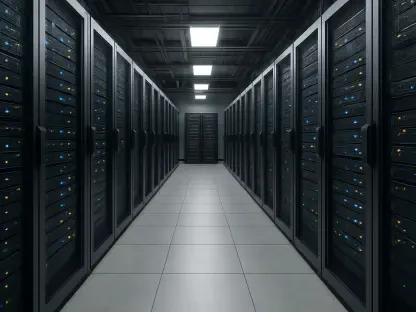In an era where technological landscapes are shifting under the weight of geopolitical tensions, economic pressures, and unprecedented computational demands, the OpenInfra Summit in Paris emerged as a pivotal moment for the OpenStack community. With a focused attendance of around 1,200 participants—a sharp decline from past peaks of 10,000—the event drew a purpose-driven crowd of infrastructure providers intent on tackling modern challenges. This gathering underscored a powerful theme: resilience, rather than sovereignty, is becoming the cornerstone of OpenStack’s evolution. As organizations grapple with dependencies on hyperscale cloud providers and proprietary systems, alongside the surging needs of AI-driven workloads, the community is redefining its role. This article delves into how these dynamics are positioning OpenStack as a critical player in the infrastructure space, navigating disruptions and uncertainties with a renewed sense of purpose.
Navigating Industry and Geopolitical Challenges
Building Independence Through Infrastructure Control
The concept of resilience took center stage at the summit, framed as a quest for independence from external influences, whether they stem from corporate giants or national policies. Thierry Carrez, general manager at the OpenInfra Foundation, articulated that true autonomy means having control over infrastructure, a perspective that strikes a chord particularly in Europe. There, concerns about reliance on US-based hyperscale cloud providers have intensified, driven by fears of geopolitical leverage. After years of outsourcing infrastructure management to these providers, many organizations are awakening to the inherent risks of such dependencies. This shift in mindset has fueled a growing emphasis on local capacity and self-reliance, positioning OpenStack as a compelling alternative. By offering tools to build and manage infrastructure free from external constraints, the platform addresses a critical need for organizations seeking to safeguard their operations against unpredictable global forces.
Responding to Proprietary System Disruptions
Another pressing issue shaping OpenStack’s trajectory is the disruption caused by changes in proprietary systems, most notably VMware’s pricing and licensing adjustments under Broadcom’s stewardship. A live demonstration during the summit keynote showcased the migration process to OpenStack, highlighting its relevance as a viable substitute for those affected by these changes. This event, paired with other industry shifts such as Redis’s transition to a less permissive license and the subsequent rise of the Valkey fork, reflects a broader reevaluation of dependencies on closed systems. These disruptions have unexpectedly bolstered OpenStack’s appeal, aligning with its strategic pivot from a broad platform to a specialized infrastructure solution. This timely repositioning enables the community to capitalize on a market increasingly wary of proprietary lock-in, offering a pathway to greater control and flexibility for infrastructure providers navigating turbulent industry waters.
Adapting to Emerging Technological Demands
Meeting the Surge of AI-Driven Infrastructure Needs
The rise of AI workloads represents a transformative force in infrastructure demands, a topic that dominated discussions at the summit. Jonathan Bryce, executive director of cloud and infrastructure at the Linux Foundation and a key figure in OpenInfra, emphasized that unlike past cloud initiatives driven by technical leaders, AI requirements are often dictated by top executives and boards. The focus is heavily on inference capabilities, with agentic workloads demanding significantly more computational power than simpler AI interactions. Drawing parallels to historical shifts in database and telecom workloads, Bryce suggested that the OpenStack community is well-prepared to adapt to these new challenges. The urgency to support AI-driven operations has reinvigorated interest in scalable, flexible infrastructure solutions, placing OpenStack at the forefront of this technological wave as organizations seek robust platforms to handle escalating computational needs.
Balancing Optimism and Caution Around AI Hype
While the potential of AI to drive infrastructure growth is undeniable, uncertainties persist about whether the current enthusiasm matches long-term demand. Stig Telfer, CTO at StackHPC, raised a critical question about the risk of oversupply, particularly with resources like GPUs, if market expectations for AI adoption fall short. Such a scenario could lead to underutilized investments and financial strain for providers. In contrast, Bryce offered a more optimistic outlook, referencing past tech bubbles like the dotcom era where surplus capacity was eventually repurposed for other needs. He argued that any temporary oversupply in AI infrastructure would likely be short-lived, given the relentless global demand for computational resources. This duality of perspectives highlights the delicate balance the OpenStack community must strike—embracing AI as a growth driver while preparing for potential market corrections that could reshape resource allocation strategies in the coming years.
Reflecting on Community Strength and Future Pathways
A Legacy of Adaptability in Changing Times
Looking back, the OpenInfra Foundation demonstrated remarkable resilience amid internal and external shifts, a theme that resonated throughout the summit’s discussions. Despite transitions such as Bryce’s expanded role at the Linux Foundation, the community remained steadfast, bolstered by leaders like Carrez who championed continuity. OpenStack’s 15-year journey stood as a testament to its ability to weather changes in contributor strategies and corporate priorities. This proven track record instilled confidence that the platform could navigate current market forces and internal dynamics with equal fortitude. Historical adaptability became a source of reassurance, underscoring that resilience was not just an aspiration but a lived reality for the community, equipping it to face whatever challenges emerged on the horizon with a grounded sense of capability.
Charting the Next Steps for Sustainable Growth
Reflecting on the insights shared, it became clear that the path forward for OpenStack hinged on leveraging its resilience to address evolving needs. The community had already begun to prioritize independence from hyperscale providers and proprietary systems, responding to geopolitical concerns and industry disruptions with strategic alternatives. As AI workloads continued to redefine infrastructure demands, efforts focused on scaling solutions for inference capabilities while remaining vigilant about potential oversupply risks. Moving ahead, fostering collaboration among stakeholders to refine local control mechanisms, especially in regions like Europe, emerged as a key priority. Additionally, investing in tools and frameworks to support emerging technologies without overextending resources offered a balanced approach. These steps, rooted in the community’s historical strength, promised to solidify OpenStack’s role as a cornerstone of resilient, adaptable infrastructure in an ever-shifting technological landscape.









